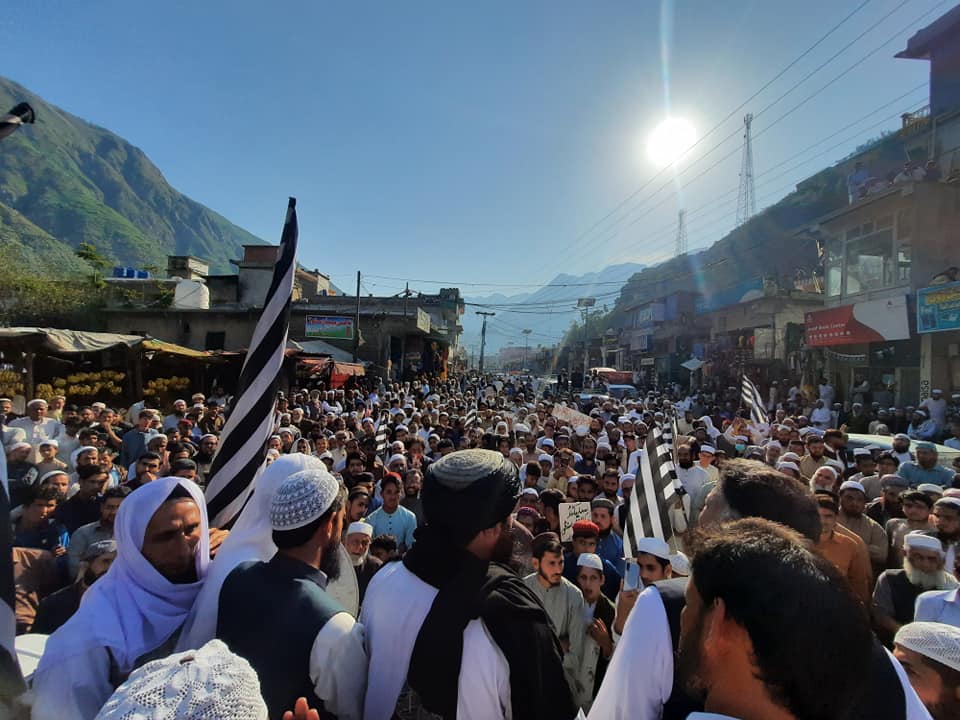Around 550 girl students in Shangla district quit education halfway every year for various reasons, including inaccessibility, absence of schools, poverty and early marriages, according to sources in the district education department.
They said that roughly 22,564 girls between 5 and 9 years of age were out of school in the district.
“I wanted to get education and become a doctor, but it seems my dream would not come true because after promoting to grade 6th, I could not continue my studies due to absence of nearby school in our village,” Samreen, a 12-year-old girl, said.
Like Samreen, over 550 girl students of the primary, middle, and secondary schools quit education every year in the district for different reasons.
Samreen stated that 10 of her other fellows had also stopped getting education because they could not afford transportation and other charges to get admission in a distant middle school.
According to the district education department, about 3,828 girls are presently enrolled in the secondary schools and 2,505 in primary schools.
A copy obtained from the department, says that there are 176 girls primary schools and 34 middle, high and higher schools in the district, just 03 GGHSS in the entire district.
It said, 374 teachers are appointed in the primary section, whereas 244 in middle, high and higher secondary schools, however, hundreds of posts are vacant in the district girls schools.
The record shows that all the 38 subject specialists posts are vacant in the three GGHSS, over 200 in primary, middle and high schools.
Out of School girls
The alarming thing is according to the district education department that 22564 girls under the age of 05 to 09 are out of schools in the district and yearly drop out rate in primary level is 519 and 139 in middle, high and higher secondary level.
“Some parents are reluctant to send their girls to schools, they believe that girls education is a shame, also afraid after Lilonai incident where a school going girl was assaulted upon return from school,” A teacher, revealed.
She said, the fear is one of the reasons of girls education enrollment drop out in the Northern region.
Infrastructure
According to the district education department (female) planning and development’s record, 89 schools were partially damaged in the 2005 devastating earthquake, out of which 45 schools had demolished and sites were handed over to the Earthquake Reconstruction and Rehabilitation Authority Erra.
It said, in those 45 schools, 06 schools are still under construction.
Besides it, in out of 28 schools being constructed under annual development program as non-strategy in which just two were completed and the rest of schools are in progress and awaiting of completion delayed due to shortage of funds with the construction and works department Shangla.
Project Manager at district reconstruction unit of Erra, Muhammad Jaffar, stated that in out of 58 schools they have handed over 46 schools to the female education department Shangla and 05 are under construction.
While replying a question, He said that there is a dispute between the National Engineering Services Pakistan (NESPAK) over 07 girls schools which projects had been terminated by Erra over negligence of contractors.
“There are also issues of funds shortages at the Erra end, however 30 to 35 percent work had done by the contractors on these 7 schools, which will be tenderized again but very soon after the dispute between Erra and NESPAK ended,” the DRU PM, said.
Due to absence of buildings, infrastructure students are receiving education either under the open sky or inside the tents despite all odds, even in harsh season of snowbound areas.
Ikramullah, Assistant Sub-divisional officer, P&D, explained that students in upper parts of the district are getting education in vulnerable buildings as the pace of work on the schools is slow.
The Khyber Pakhtunkhwa government builds schools in the province but instead of purchasing land for the schools, government ask public for donation land, the policy is one of the major hurdle in lack of girls schools in the area.
This correspondent created a poll on social media about the government schools establishment policy for land, where 77 per cent people voted against the policy and in support that government should purchase land for the schools, on the other hand, 23 per cent social media users voted in support of the policy.

A government school teacher, said on condition of anonymity that political intervention in the education department is a common practice, particularly teachers and management staff, are being transferred on the Pakistan Tehrik-I-Insaf local leaders’ recommendations which has effected the girls education system in the district.
She said, the girls education department should be independent from any type of pressure and recommendation culture and officers should not adhere to the political leaders orders.
Funds for schools maintenance
Sources said that the department had released Rs5.6 million to the schools in 2019 for petty repairs. They said that due to poor monitoring funds were misappropriated at 15 schools where the department had initiated inquiries.
According to Human Rights Watch research report conducted in November, 2018 says, Families in particularly fear kidnapping, especially when girls face long walks to school in Pakistan remote regions. It is difficult to know the exact number of kidnappings each year, due to inconsistencies in how figures are collected, but media reports suggest a significant and growing problem, and fuel fears.
It said, there are not enough government schools for all children to have access to one. Government schools are in such short supply that even in Pakistan’s major cities many children cannot reach a school on foot safely and in a reasonable amount of time. The situation is far worse in rural areas, where schools are even more scarce, and it is less likely that private schools will fill the gap. Families that can access a government school often find that it is overcrowded.
Public Misconception
Zainab, a monitor of the Independent Monitoring Unit, said there were still cultural barriers in the way of girls education in the district. She claimed that in some cases misappropriation was noted in parent-teacher councils funds.
A grade 7th student, Rishma Bibi, revealed that their teachers send them to their houses for domestic work and engaged them on look after their children.
She said, Once one of her teachers sent her to her home for cleaning the kitchen pots, following that she informed her elder brother and he complained to former district education officer (Female) Shangla Parveen Rehman.
Alif Ailaan in 2017 District Education Rankings Report, reported Shangla as lowest district in ranking of education at 23 in 25 districts of Khyber Pakhtunkhwa.
“My daughter has recently promoted to grade 6th but the middle schools is located at distance of 5 kilometer by road and an hour walk from our village. I can’t afford transportation charges to get admitted her in the far away middle school,” Islam-ul-Haq, a resident of Ranzra, said.
He said that he desires to get enroll her daughter in a school and she could get education at least till grade 10th.
Mubashir Hassan, an educationist, told The Northern Post that most of the girls schools were established on political basis by the then lawmakers and that schools are at a long distance from the population and inaccessible to the girls.
Tahsin, a teacher, explained that Early marriages, seasonal migration of families, lack of interest of parents, lack of awareness, conservative mindset are also reasons of girls enrollment drop out in the district.
She said that some parents told her that they do not want to get jobs so they haven’t need further education and hence drops out their daughters from schools.
District education officer (male), Muhammad Amin, said 2304 girls students are enrolled in the boys primary schools of district Shangla and getting the co-education.
“We enroll the girls students in case absence of nearby girls school or the school overcrowded and some areas parents prefer male schools because of the quality of education being imparted in the boys schools,” The DEO claimed.
District Education officer female department, Zubaida Khatak, told The Northern Post that Poverty, inaccessibility are reasons of the girls enrollment drop out, inquiries have been initiated against the schools heads for misuse of PTC funds.
Minister for information Khyber Pakhtunkhwa, Shaukat Yousafzai, told this scribe that he admit that the absence of schools is a major reason in girls enrollment drop out and out of schools children.
“We have kept focus to bring reforms in the girl education, while in this budget our government allocated 70 percent of budget for girls education and the rest of 30 percent for male and also taking effective steps to bring out of school girls to schools at any cost,” The minister, said, who is elected MPA from Shangla.
He claimed that schools in the past were established on political interest just for the sake of employment of a class-IV which are away from the population but now the government is planning for new schools and the schools would be built in that areas where the out of schools students ratio is higher.
The minister replied that government also intended to enroll out of school students in private schools under the government-partnership policy and also starting second shifts in the government schools.
Answering a question, Mr Yousafzai, explained that issues exists and the practice of sending students on domestic work has been a common in the past, however now the situation is quite better and government is striving to bring further reforms in the education sector particularly in the girls education, besides it more monitors are being hired for improving quality of education and control absenteeism.
Notwithstanding Article 25A of the constitution that ensures a child’s right to free and compulsory education from the age of 5 to 16 years but in this modern era 22564 girls besides boys have been kept deprived of this fundamental right, while over 550 girls quit education yearly because of inaccessibility, absence of schools, lack of facilities and lack of awareness and the female literacy rate is still 12 in the district Shangla.












well written